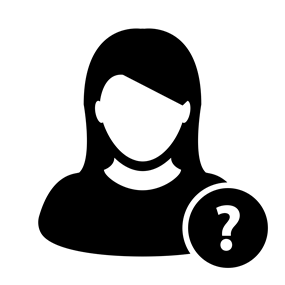Wow, July 1st, huh? How did that happen? The usual way, of course. Time and tide wait for no man ... woman ... child ... <fill in noun of your choice>. It is easy to get caught up in the day-to-day and not stop and reflect, but that's what I'm doing this weekend. I'm taking a few minutes as we start the second half of the year to see where I am.
At the beginning of this year I posted My Three Words for 2016. The words I picked still feel as right today as they did six months ago. As is the way with life, not everything turns out the way you plan, but that doesn't make planning a waste of time. As I'll talk more about in a minute, plans help free you up for when the unexpected takes place.
Vision
I started out the year saying: "this year is the time for both of us to get clarity with our vision." For mom it has been a very bumpy road through one cataract surgery. She was the one in a thousand or so that develops an infection inside the eyeball. The treatments were aggressive and painful but prevented a second surgery to the eye. As always I looked for the lessons in the situation and one was to remember that we all "see" things differently. With the infection swimming around inside her eye she literally was seeing things that weren't there, or rather here in the "real" world. It was a frightening experience for her but I tried to reassure her that she was in fact seeing things, but I just couldn't see them, much in the way my husband can't see colors that I see.
It's a great reminder though. When designing various types of media it is important to think about how colors and images and fonts and words and everything is perceived by others. Not to the point of analysis by paralysis, but it is good to be mindful that others may see things differently, literally. How would it look to someone who is color blind? Which fonts work best for those with conditions such as dyslexia? Are you designing interactions that are completely sight-based or would preclude those with disabilities.
Science
To quote again the MythBusters adage that "The only difference between screwing around and science is writing it down," I am making progress but I'm not where I'd like to be yet. I have a gazillion notes of things I want to share with you readers and ideas piling up too haphazardly for my tastes, but I'm making progress.
And that is key. We all need to see our progress. (Summer Reading Idea: The Progress Principle by Teresa Amabile and Steven Kramer) This is one of the key lessons I try to impart in my gamification and instructional design sessions. Progress makes us happy. It keeps us motivated by showing us how far we have come and encourages us to take the next steps forward. I have tried a number of methods over the years to mark my progress and keep up with things. Written notebooks, electronic schedulers and calendars and journals, lists and more lists, etc.
One thing that I have learned the hard way is that long lists are the worst. (Summer Reading Idea: Rework by Jason Fried and David Hansson) They seem like that are helping us get organized but what they are doing really is strangling us. I've benefited greatly from learning to keep lists short. Better to have several short lists and a system of tracking these than just writing list after list. I still haven't found my perfect system, and that's OK as long as I don't let the lists stand in my way. The point is to have a quick way to see what I need to do so I don't have to waste time and brain power but can get right to work (or play or whatever).
A couple of things I use, for different situations are Google Keep, sticky notes with the urgent top three things I need to do for the day at my day job and lately I have been trying out a new-ish app called Fabulous and so far it lives up to the name. I plan to write more about it next week, but if you have an Android device you can find it on the Play Store http://www.thefabulous.co/; iOS is in the works. Wow, that's a switch. I can't tell you how many times I've been disappointed after hearing about a great app only to find that it isn't available for Android.
But back to the Science thing. I'm doubling down on my commitment to documenting things better in the second half of the year, so watch out. I could get very share-y.
Nesting
My final word was nesting and that too has gone a little slower than expected, but I am enjoying the process. I certainly get to read a great deal more with my long commutes so there's that. I still haven't unpacked a lot of stuff which is an indicator of just how much stuff I have packed away that I don't use.
It got me thinking that this is a good metaphor for the way many people still design learning. The instructor, feeling the responsibility of being the expert, still thinks that it is his/her job to pour all of the information they know into the learners' heads. News flash. It's not. You don't need to tell them everything you know. You need to help them learn what they need to know. Whether you are creating a webinar or a full course or whatever, take a step back and see what the learners' really need, right now. And how can you provide that information in the most digestible and useful way. Should the information be a series of 3-5 minute videos instead of a full hour webinar? Could you use the idea of unlocking additional content as the learner meets certain milestones, instead of dumping it all on them at once?
So how about you? Did you set goals at the beginning of the year or any other time that you haven't checked on lately? How do you keep track of your progress? Let me know.

